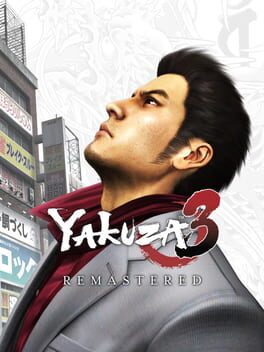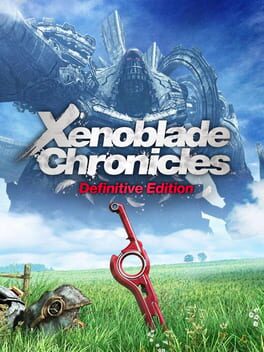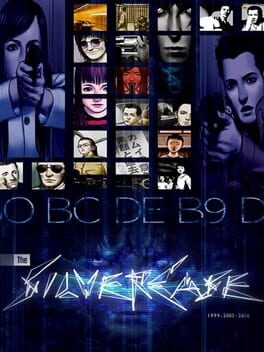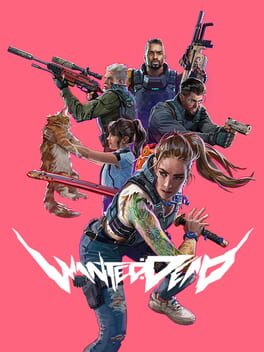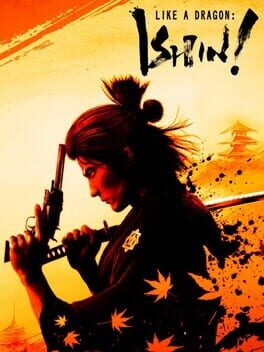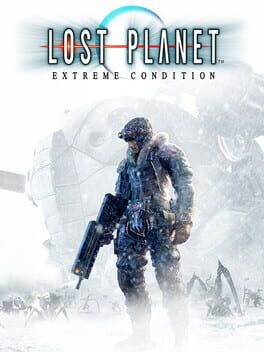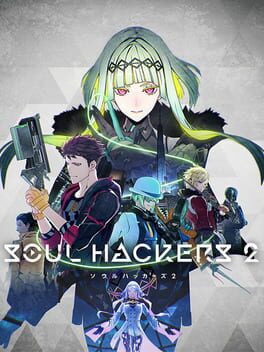SpaceTacos
Bio
Nothing here!
Badges

GOTY '23
Participated in the 2023 Game of the Year Event

Gone Gold
Received 5+ likes on a review while featured on the front page

Popular
Gained 15+ followers

Well Written
Gained 10+ likes on a single review

Best Friends
Become mutual friends with at least 3 others

3 Years of Service
Being part of the Backloggd community for 3 years

Liked
Gained 10+ total review likes

Noticed
Gained 3+ followers

GOTY '20
Participated in the 2020 Game of the Year Event
Favorite Games
085
Total Games Played
006
Played in 2024
000
Games Backloggd
Recently Played See More
Recently Reviewed See More
I love me a 2d metroidvania. Something about the mix of platforming and collecting trinkets behind various locked doors appeals to me so much that, if the aesthetic is right, I'll spend hours playing even the most mechanically mid title in the genre. As proof, I will state that I had 100%'d Guacamelee not once, but twice. This is all to say that, even if The Lost Crown hooked me in like the rest of them just by virtue of sharing that core, I feel like there are genuine merits that make it worth recommending.
First off, the presentation is outstanding for the genre. The art style is pleasing and the 2d/3d perspective allows for some really cool backgrounds with a sense of depth to them. Each area has a distinctive atmosphere and they offer some visual surprises along the way. The real sauce is, however, in the cutscenes that frequently not only burst with color but also veer into shonen anime territory with its camerawork and animations. But instead of making the game look generic it forms a solid foundation for hype moments and dynamic boss battles and makes the increase in scale during the finale feel less awkward. I did not know that I needed Prince of Persia to do a kamehameha, but the devs were right. Also worth mentioning that the game is fully voiced, and we've got decent voice acting, at least for the main cast. The score is done by Gareth Coker of the Ori and the Blind Forest fame, but it sidesteps both the loud sentimental pathos of that work and the common "eastern music" pastiche, most likely due to him collaborating with an Iranian composer, Samar Rad.
The writing is a bit of a mixed bag. Some bits feel lazy (like calling a group of heroes the Immortals in a story about corrupted humans trying to ascend to godhood, a bit on the nose there), some underdeveloped (Sargon seems to experience a neat character transformation from a brash youth to a hardened wise warrior on paper, but it's nigh imperceptible in the actual game). On the whole it's just solid, but what I find truly fascinating is how it conjures up a fascinating world full of Borges-like legends and characters. It's especially refreshing to see a time travel narrative that doesn't try to spin the old tale about actions and their consequences, but rather presents you with a messy tangle of alternative threads that intersect and interact freely. The bifurcations of the garden of forking paths presented not as a rigid system of parallel timelines but as a tool of infinite possibilities.
But it's the gameplay that really shines here. Now, The Lost Crown doesn't really present that many new ideas of its own. Screenshots you can put on the map as markers is one, and I welcome this approach as opposed to the excessive linearity of the recent Metroid games. But pretty much everything else you've already seen in one metroidvania or another. We got all the hits: wall jumping, air dashing, switching between two worlds, boomerang weapon, keys as keys and movement abilities as keys. But The Lost Crown combines all of these familiar elements into a neat package combined with good level and combat design, and it's polished to the point of being one of the best feeling 2d platformers in general.
Here's an example. Your combat options initially are limited two just two buttons: one for a sword attack and one for a parry. Your sword attacks can be chained into a combo, and various directional inputs result in different moves, but that's all standard stuff. The parry, however, isn't as powerful and brain dead as you might initially think. It's not like Samus Returns where you can confidently bait an attack within a second of seeing an enemy and nuke it with a press of a button. Here it's more of a shield that you need to time with the incoming attacks to block them. You can only return damage from parrying a special color-coded attack, and those are not as frequent, while in boss fights they are mostly used as an opportunity for visual spectacle. Still, blocking attacks requires timing and learning the enemy's moveset. Some of them use feints to fake you out (including one enemy whose attack animations play out backwards). Some annoy you by being out of reach in the air. All of them have unblockable attacks that require a dodge, but, crucially, the dodge's i-frames are strict enough that you'll get punished for a misplaced or a mistimed one. So combat becomes a matter of dynamic positioning, and a group of enemies can easily overwhelm you even in the game's second half. And I'm sorry if that comes off as excessive praise for a combat system whose sole merit is merely being thought out, but coming to this after the Ori games sure feels good.
This also applies to level design. The opening section guides you along a linear path, but it does so through bits of multiple areas and actually provides enough space for you to explore even with your starting kit. Probably the most suprising thing about the first couple hours of the game is just how easy it is to choose a random exit and find out the path keeps going to some place else that doesn't seem to be the objective. You can stumble and make your way into this game's Blighttown a fair bit before hitting a wall, if you're persistent enough. Not to mention that the designers regularly put in sick platforming sequences that feel amazing to pull off. But then that's to be expected from the devs of Rayman Legends.
The one obvious blemish is that the game's more buggy that it has any right being. I've experienced falling out of bounds, zipping, lingering animation effects, scripts not working immediately after a cutscene and, very frequently, every object on the map resetting into its intended state as you enter a room. This is nothing game-breaking, and god knows new releases these days are held together by duct tape as a rule, but it is disappointing to see a smaller scale title with dozens of QA specialists still release in this state (with early access, no less).
First off, the presentation is outstanding for the genre. The art style is pleasing and the 2d/3d perspective allows for some really cool backgrounds with a sense of depth to them. Each area has a distinctive atmosphere and they offer some visual surprises along the way. The real sauce is, however, in the cutscenes that frequently not only burst with color but also veer into shonen anime territory with its camerawork and animations. But instead of making the game look generic it forms a solid foundation for hype moments and dynamic boss battles and makes the increase in scale during the finale feel less awkward. I did not know that I needed Prince of Persia to do a kamehameha, but the devs were right. Also worth mentioning that the game is fully voiced, and we've got decent voice acting, at least for the main cast. The score is done by Gareth Coker of the Ori and the Blind Forest fame, but it sidesteps both the loud sentimental pathos of that work and the common "eastern music" pastiche, most likely due to him collaborating with an Iranian composer, Samar Rad.
The writing is a bit of a mixed bag. Some bits feel lazy (like calling a group of heroes the Immortals in a story about corrupted humans trying to ascend to godhood, a bit on the nose there), some underdeveloped (Sargon seems to experience a neat character transformation from a brash youth to a hardened wise warrior on paper, but it's nigh imperceptible in the actual game). On the whole it's just solid, but what I find truly fascinating is how it conjures up a fascinating world full of Borges-like legends and characters. It's especially refreshing to see a time travel narrative that doesn't try to spin the old tale about actions and their consequences, but rather presents you with a messy tangle of alternative threads that intersect and interact freely. The bifurcations of the garden of forking paths presented not as a rigid system of parallel timelines but as a tool of infinite possibilities.
But it's the gameplay that really shines here. Now, The Lost Crown doesn't really present that many new ideas of its own. Screenshots you can put on the map as markers is one, and I welcome this approach as opposed to the excessive linearity of the recent Metroid games. But pretty much everything else you've already seen in one metroidvania or another. We got all the hits: wall jumping, air dashing, switching between two worlds, boomerang weapon, keys as keys and movement abilities as keys. But The Lost Crown combines all of these familiar elements into a neat package combined with good level and combat design, and it's polished to the point of being one of the best feeling 2d platformers in general.
Here's an example. Your combat options initially are limited two just two buttons: one for a sword attack and one for a parry. Your sword attacks can be chained into a combo, and various directional inputs result in different moves, but that's all standard stuff. The parry, however, isn't as powerful and brain dead as you might initially think. It's not like Samus Returns where you can confidently bait an attack within a second of seeing an enemy and nuke it with a press of a button. Here it's more of a shield that you need to time with the incoming attacks to block them. You can only return damage from parrying a special color-coded attack, and those are not as frequent, while in boss fights they are mostly used as an opportunity for visual spectacle. Still, blocking attacks requires timing and learning the enemy's moveset. Some of them use feints to fake you out (including one enemy whose attack animations play out backwards). Some annoy you by being out of reach in the air. All of them have unblockable attacks that require a dodge, but, crucially, the dodge's i-frames are strict enough that you'll get punished for a misplaced or a mistimed one. So combat becomes a matter of dynamic positioning, and a group of enemies can easily overwhelm you even in the game's second half. And I'm sorry if that comes off as excessive praise for a combat system whose sole merit is merely being thought out, but coming to this after the Ori games sure feels good.
This also applies to level design. The opening section guides you along a linear path, but it does so through bits of multiple areas and actually provides enough space for you to explore even with your starting kit. Probably the most suprising thing about the first couple hours of the game is just how easy it is to choose a random exit and find out the path keeps going to some place else that doesn't seem to be the objective. You can stumble and make your way into this game's Blighttown a fair bit before hitting a wall, if you're persistent enough. Not to mention that the designers regularly put in sick platforming sequences that feel amazing to pull off. But then that's to be expected from the devs of Rayman Legends.
The one obvious blemish is that the game's more buggy that it has any right being. I've experienced falling out of bounds, zipping, lingering animation effects, scripts not working immediately after a cutscene and, very frequently, every object on the map resetting into its intended state as you enter a room. This is nothing game-breaking, and god knows new releases these days are held together by duct tape as a rule, but it is disappointing to see a smaller scale title with dozens of QA specialists still release in this state (with early access, no less).
Soul Hackers 2 has a meal mechanic. Throughout the game you can obtain various dishes: buy them in stores, get them from your companions etc. These dishes have different effects on the dungeon crawling part of the game. Some dishes give you HP regen, others give plain stat boosts or make critical hits more likely to occur. Standard stuff. But there's one more side to this mechanic that further complicates things. Every time you eat a meal you watch a short cutscene in which your party members share their opinions on it. Afterwards, you can see who likes or dislikes a particular dish when choosing what to eat from the menu. So, you are now tasked with choosing not only a meal that will suit your goals in upcoming dungeon exploration, but also choosing the right combination of meal buff and companion affinity. Obviously, every one of your party members has their own preferences and it's impossible to cater to everyone's tastes, so you usually have to make some sacrifices.
Except you don't have to. Whether or not your party members will enjoy the meal has absolutely no bearing on how potent the meal's effects are going to be. Further on, whenever you have a meal someone from your party is always absent anyway, so their opinion is not accounted for. So why does this exist, and why do I get loading screen tips on the various types of affinity each party member can have towards a dish?
I have no answer, but I think this tiny bit actually encapsulates Soul Hackers 2 as a whole rather well. It's something that tries to pose for an actual gameplay mechanic but ends up being empty gesturing towards character interaction. Appropriate for a game that feels like a bunch of concept art that got adapted into being into both a sequel to a 25-year old game and the third core pillar of the entire SMT franchise, marrying the dungeon crawling of the mainline games with the approachable nature and story focus of the Persona series. Yes, it is a sequel to Soul Hackers and it retains a lot of the concepts from the previous title, but whereas that game's cyberpunk setting was an important component of atmosphere and the story's themes (explicitly delving into society's acceptance of new invasive technology under late capitalism), here it's just familiar neon set dressing that has very little to do with what the story actually does. Yes, the gameplay does carve its own niche in the franchise, but the dungeons are disgustingly basic and boring, the combat is somehow grindier than ever, and all the narrative free estate is spent on a shonen version of The Fifth Element (1997).
Usually when I don't like something I can at least see the intent behind whatever it is that isn't working for me. It could be a lack of polish, a writing issue, a gameplay nuisance, but it's usually a particular flaw in the game's working system or creative vision that you can still glean from the final product and appreciate. Soul Hackers 2 just feels like it doesn't have anything cohesive like that beneath the surface. It's just fluff meeting the bare requirements of an RPG stretched into a 40 hour game and wrapped in a pretty full-price package. (And don't even get me started on that DLC.)
Except you don't have to. Whether or not your party members will enjoy the meal has absolutely no bearing on how potent the meal's effects are going to be. Further on, whenever you have a meal someone from your party is always absent anyway, so their opinion is not accounted for. So why does this exist, and why do I get loading screen tips on the various types of affinity each party member can have towards a dish?
I have no answer, but I think this tiny bit actually encapsulates Soul Hackers 2 as a whole rather well. It's something that tries to pose for an actual gameplay mechanic but ends up being empty gesturing towards character interaction. Appropriate for a game that feels like a bunch of concept art that got adapted into being into both a sequel to a 25-year old game and the third core pillar of the entire SMT franchise, marrying the dungeon crawling of the mainline games with the approachable nature and story focus of the Persona series. Yes, it is a sequel to Soul Hackers and it retains a lot of the concepts from the previous title, but whereas that game's cyberpunk setting was an important component of atmosphere and the story's themes (explicitly delving into society's acceptance of new invasive technology under late capitalism), here it's just familiar neon set dressing that has very little to do with what the story actually does. Yes, the gameplay does carve its own niche in the franchise, but the dungeons are disgustingly basic and boring, the combat is somehow grindier than ever, and all the narrative free estate is spent on a shonen version of The Fifth Element (1997).
Usually when I don't like something I can at least see the intent behind whatever it is that isn't working for me. It could be a lack of polish, a writing issue, a gameplay nuisance, but it's usually a particular flaw in the game's working system or creative vision that you can still glean from the final product and appreciate. Soul Hackers 2 just feels like it doesn't have anything cohesive like that beneath the surface. It's just fluff meeting the bare requirements of an RPG stretched into a 40 hour game and wrapped in a pretty full-price package. (And don't even get me started on that DLC.)

